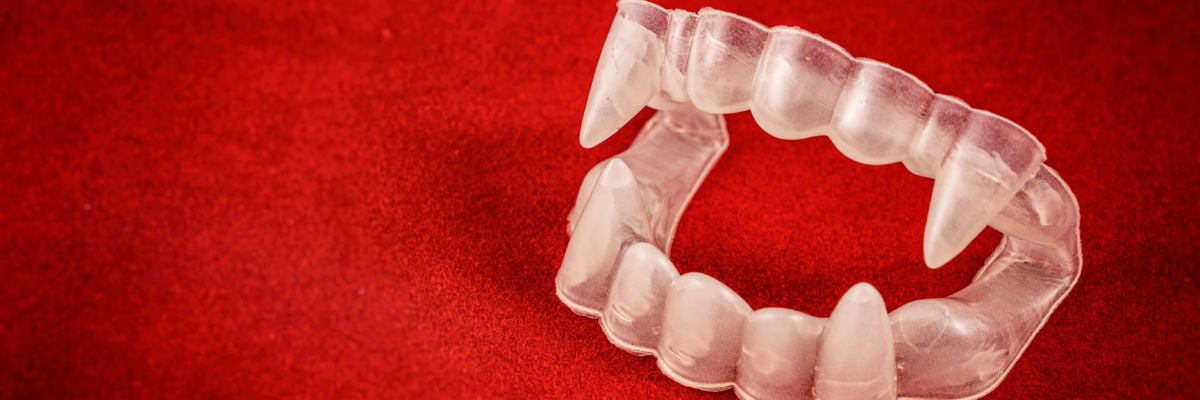
Daybreakers (2009) was the most expensive movie I ever watched. It was on a flight I had to rebook because I had missed the original one. It is a gem of wisdom—an apologetic for the Church’s attitude toward perversion of all kinds and a horror movie that features hope front and center.
It has at least three important Christian themes:
- Sin makes us hypocrites as we despise those who go farther than us, without admitting that we are guilty of the same thing.
- Dying to ourselves, though painful, is better than the living death that is sin.
- Grace can be painful to experience, but ultimately, it gives the ability to live the full life we want but that we cannot live just by our own free will.
As a movie, Daybreakers is most spectacular in the beginning, opening with a montage of scenes that gradually establish the horror: a strange disease has caused almost everyone in the world to become a vampire. More horrible still, “humanity” has taken it in stride. Chrysler makes Chargers with proprietary day-driving technology. Busy vampires in crowds go to work, attend school, and do their shopping at night, and the remaining humans live either in sinister, “humane” blood-milking farms or hide in scattered rebel bands. As the blood supply dwindles, vampire hematologists race to develop an adequate blood substitute. The stakes are higher than satiation, or even survival, since blood-starved vampires become “subsiders” who feed on other vampires.
Many, including the actors and others involved in production of the movie, seem to think of it as a fable about fossil fuels—but it is so much more powerful as a story about sin, the inevitable lack of real satisfaction that it gives, and the hypocrisy it engenders. The “normal vampires” rationalize their profoundly warped existence while expressing contempt for the ones who “go too far.” For example, in one scene, a vampire cop looks at a dead subsider and spits out, “Animals!” There is a similar phenomenon in the reality we live in now, most clearly seen with regard to sexual sins, such as when men and women who justify various kinds of perversions express disgust for pedophiles. It’s a false comfort to look down on people who take your own sin uncomfortably farther.
Indeed, few modern metaphors for sin are as precise as vampirism. Vampires, for instance, cannot see their reflections, just as serious sin alienates us so much that it even separates us from ourselves, to the point of forgetting what we really are. Sin, as the great novelist Sigrid Undset says through one of her characters, is trampling on other people. This antisocial character of sin is most clearly personified by a vampire, whose life depends on taking away the life of others. It is the most horrific illustration of the glutton, who lives to eat instead of eating to live. Similarly, even the most refined vampire is ultimately a being whose highest aim is satisfying his appetite. This last fact is particularly well captured in the movie’s depictions of normalcy in a regime of vampires: there’s still Starbucks; there are still crowds on the streets; high schoolers idle together outside; TVs are still on in lobbies; major news networks feature well-dressed vampire journalists interviewing politicians. Yet the yellow eyes of each person reveal the lust for blood uppermost in each mind.
Even more compelling than the psychological probing of sin is the implicit consideration of the role of grace. Its necessity is emphasized first. There are vampires who recognize the perversity of their situation and even make noble decisions from time to time. The protagonist, a scientist developing a blood substitute, loathes the fact that he has become a vampire and refuses to drink human blood. He exhibits good will, braves pressure from his vampire peers, and even shows heroism in helping and protecting the persecuted humans. Nevertheless, he cannot free himself on his own. Furthermore, it is significant that his attention in the first half of the movie is on developing a “substitute” for human blood. It is similar to the way in which modern Western society obsesses over creating more and more ways of indulging the passions for violence and sex “without hurting anyone.” No one is prepared to dream of the possibility of curing the sickness itself.
As the movie progresses, something similar to grace emerges. In the most desperate hour, it is discovered that there is a way to reverse the transition to vampire. The transition is not made by mere self-help. Instead, it is by exposure to light and water. The scenes depicting these transformations are redolent of the Christian associations with both of these essential realities. Transformation comes with a great deal of pain—pain that is rewarded with being truly human again. Like Eustace peeling of his dragon skin in the Voyage of the Dawn Treader, shedding evil hurts, but it also means becoming what we are meant to be.
Like any good movie, Daybreakers is not an allegory, but rather an example of how real art tends to “rhyme” with the deepest realities, which are supernatural. One of the “rhymes” is seen in a twist at the end of the movie. Like how the way in which grace, in some mysterious way, produces a new creature, as St. Paul says, so are these renewed humans endowed with a new ability. The tables are turned; it is now the vampires who must fear the humans, especially when they are prepared to offer their lives.
The gore in the film, rather than being gratuitous, accentuates the hidden theme: that, indeed, the wages of sin is death, even it is living death. Although one does not need to watch this movie to learn that, and though it may not be worth the price of a plane ticket, it is an example of a vigorous horror movie, invigorated by truth, that is worth watching.



